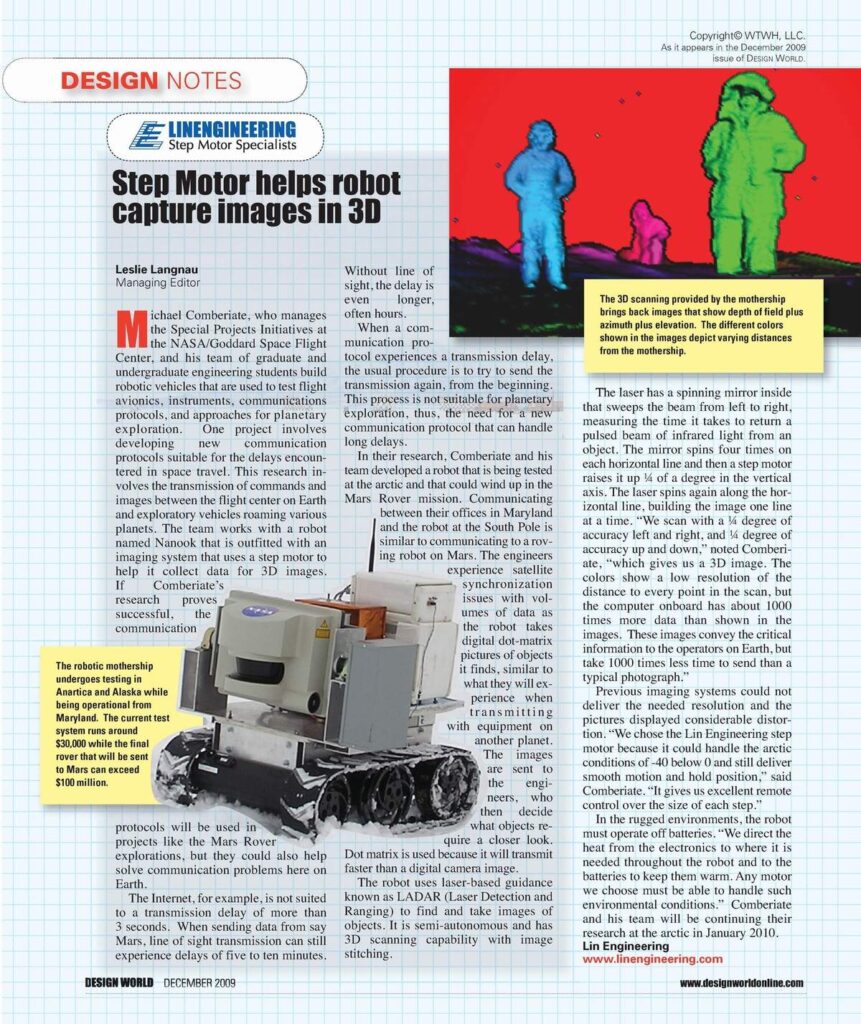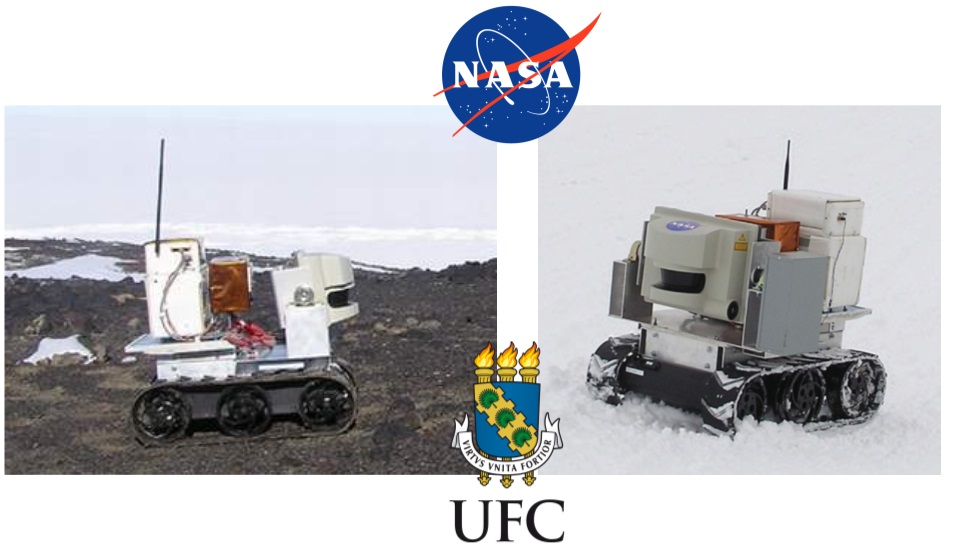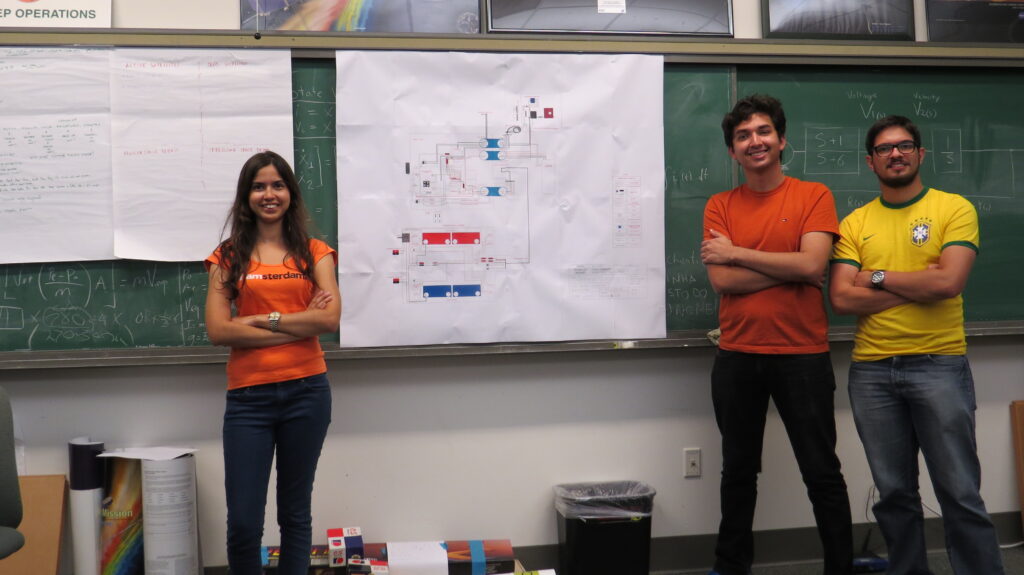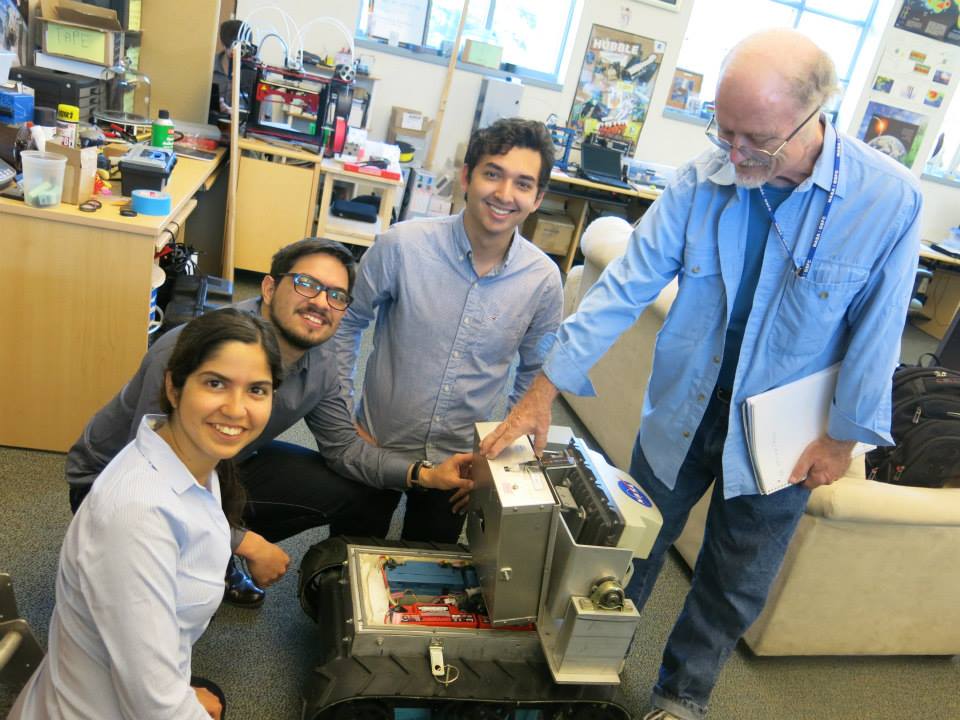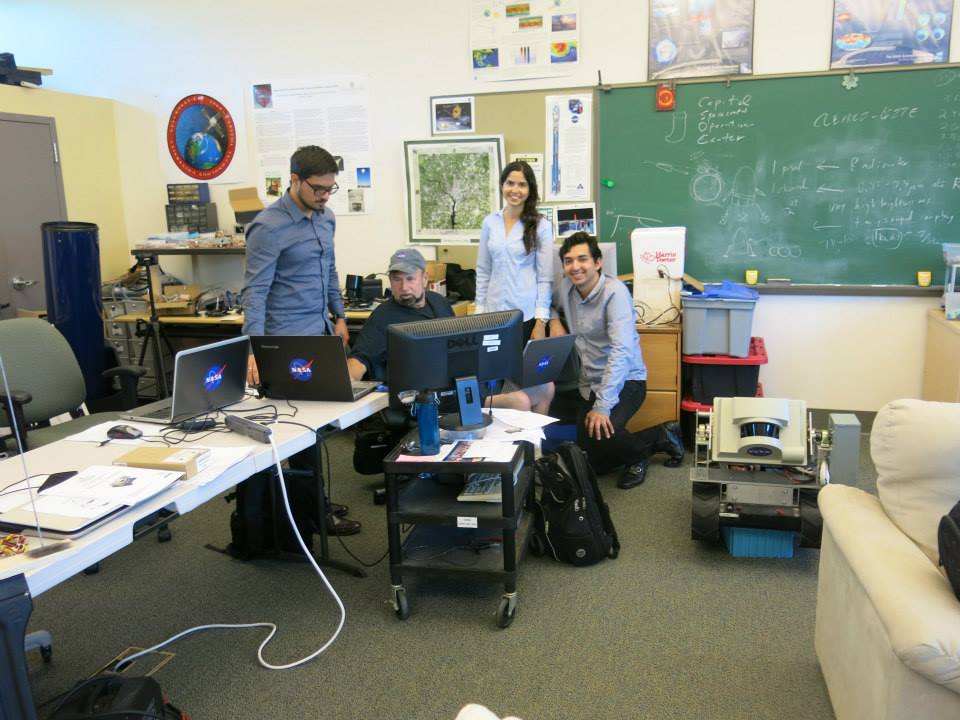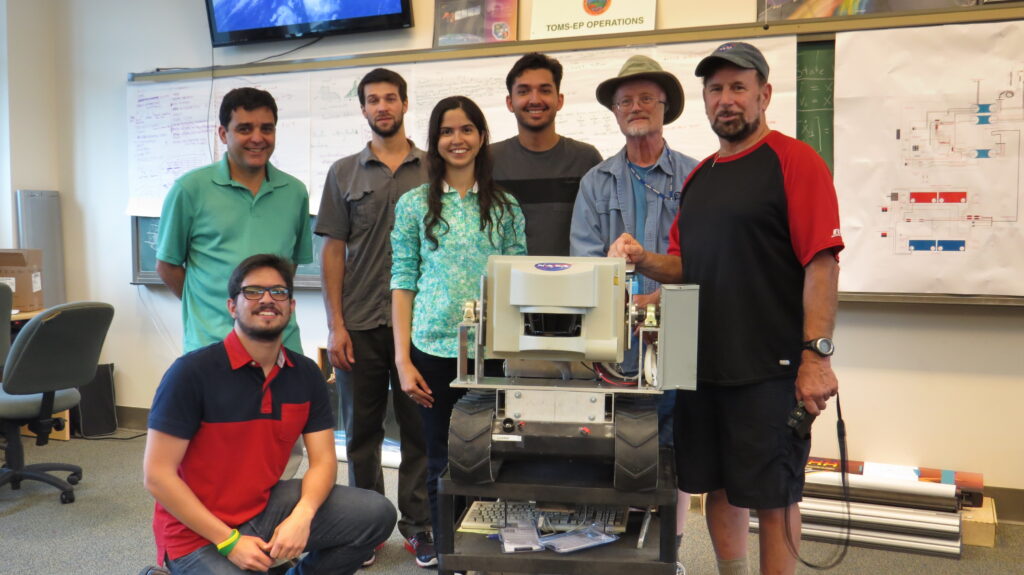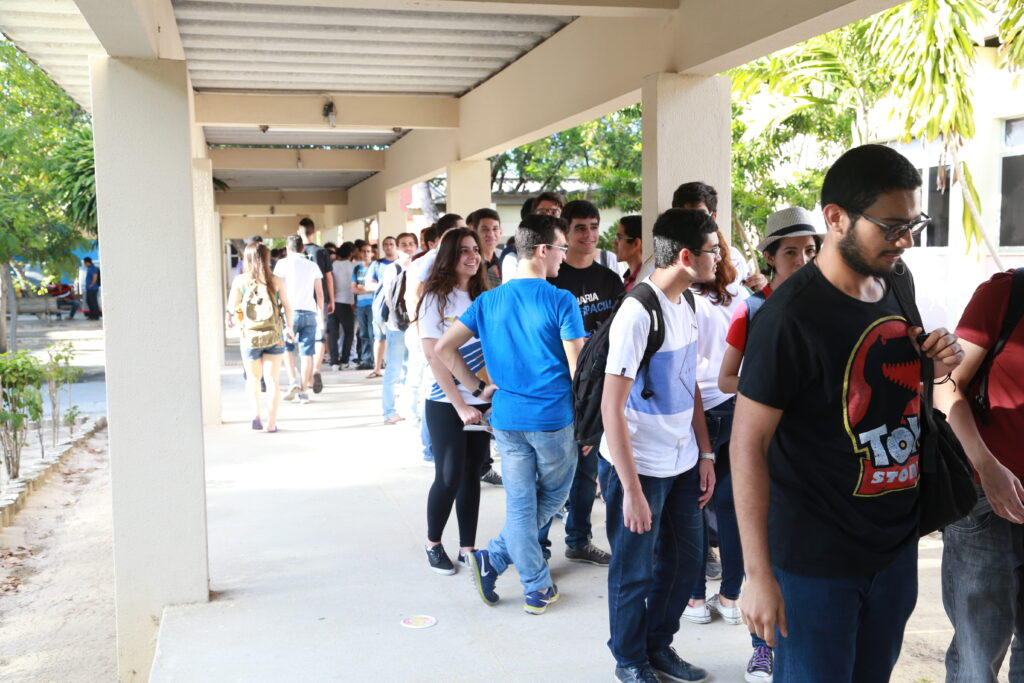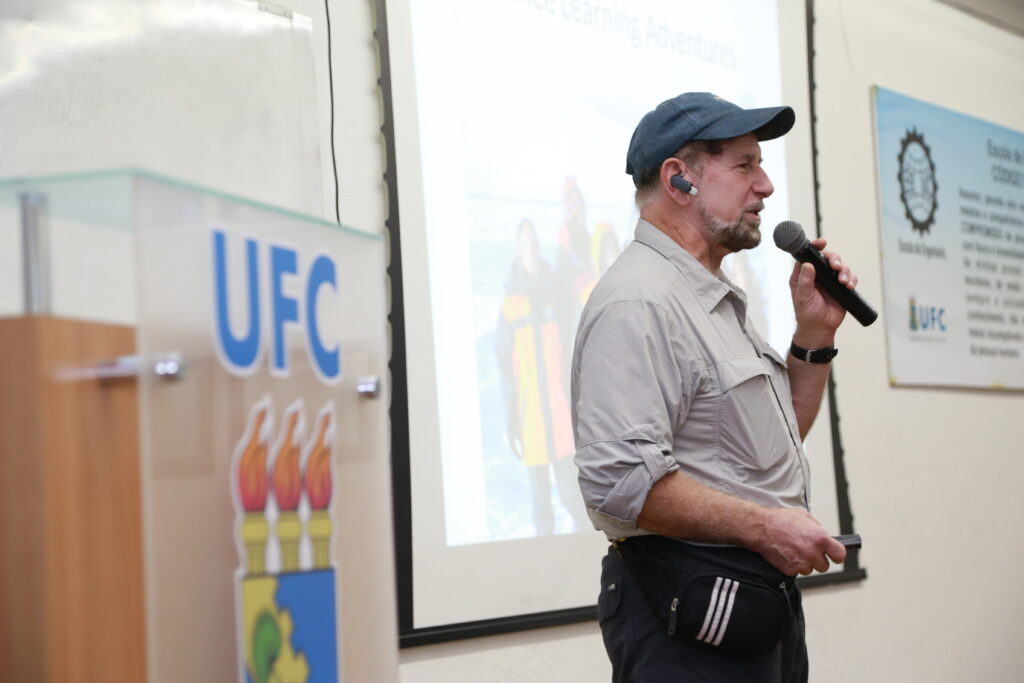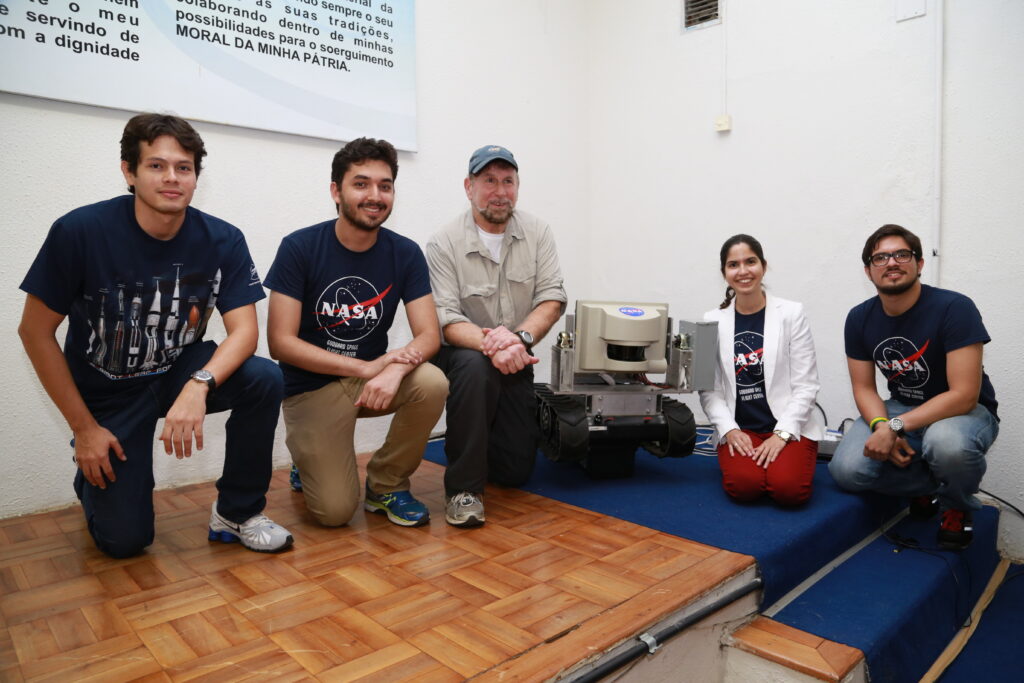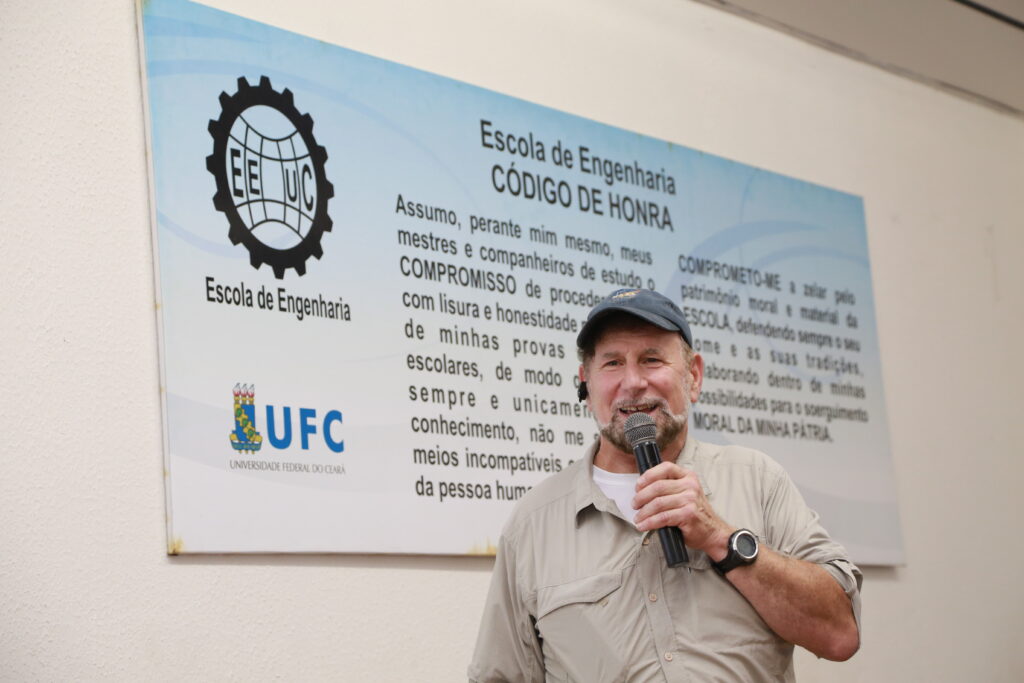Where it all started
Three gpar undergraduate members, linked to the Department of Electrical Engineering of the Federal University, participated in the 2014 Sciences Without Borders (CSF) program in the United States, with support and promotion from CAPES. Ana Beatriz, Thiago Lima and Nadson Tomé developed academic activities in American universities. If highlighting, they stimulated a partnership that culminated in the donation of a NASA robot to the GPAR laboratory.
In 2015, as part of the program, they applied to do internship in various programs across the United States. But only one of them caught the eye: Capitol Technology University's nanosatellite internship program, created with the direct participation of scientists and engineers working (or worked) for long years at NASA, such as engineer MSc. Marco Figueiredo, Dr. Patrick Stakem and Dr. Alexander "Sandy" Antunes.
They shared among themselves the existence of the research internship program that had been recently launched by Capitol Technology University, applied and were selected.
The program aimed to insert Brazilian students of excellence (with the best academic income) in the study and development of nanosatellite systems — cubesat — with the possibility of knowing, working and being mentored by NASA scientists and engineers. They applied and were selected to participate in the program that would begin in mid-May 2015.
The program titled Capitol Technology University Cubesat Bootcamp began in mid-May 2015. When they got there, they stood out. They participated in the courses of the program, the various practices and the challenges proposed. The three gpar members presented the top three averages of the group of 18 students from several Brazilian universities who participated.
With former NASA engineer Marco Figueiredo, mentors of the L.A.R.G.E (LiDAR Assisted Robotic Group Exploration) project, brought a Great challenge to students: reverse engineer for nanook robot documentation.
Before telling about the work of UFC students, it is interesting to highlight the importance of the challenge. Nanook is a robot that is part of a group of robotexplorers of the L.A.R.G.E project, started by NASA in 2006. This project was developed during 2 NASA internship programs called "NASA Goddard Engineering Boot Camp Program" with international students in 2011 and 2012 from the Goddad Space Flight Center, including the participation of Brazilian students. The purpose of the LARGE project was to set up a team of connected autonomous robots to be used in three-dimensional terrain mapping, high resolution images, and sample collection on unexplored terrain. More information about the project can be found through the link. Link 1 and Link 2
Although it was a project with a complex development, throughout its development time, the project had not been documented, so all part of the system control had been lost with the dispersion of project members upon completion of the two Programs. In view of this, Ana Beatriz, Thiago Lima and Nadson Tomé had to understand the system and put it to work with its functionalities, without any instruction of manual of use and operational procedure. "NASA Mike," as Michael Comberiate is called, asked, for a short time the trainees, to make simple documentation of the system, and that if possible, they would learn and teach him how to operate the robot. It set a two-week deadline to return and see the work developed by the team.
By the end of the second week, NASA Mike returned. He was impressed by the result of the work carried out by the team, which not only developed a complete report of Hardware and Software, indicating paths of improvement, but had also written an operation manual of the three-dimensional mapping system of the Nanook.
NASA Mike was so surprised and happy that he told students of the possibility of continuing with the project in Brazil. And so it happened. Upon returning to Brazil, the students talked to Professor Dr. Fabrício Nogueira, coordinator of the GPAR, so that he could enter the procedures necessary for the transport of the robot to the UFC. A lecture titled "EXPEDITIONS OF A NASA ENGINEER" was organized so mike could take advantage of his stint at the university and tell a little about his stories and experiences on expeditions and works as a NASA engineer.
The lecture was a success! The largest auditorium of the Technology Center, with capacity for 217 people crowded. It also happened that many spectators stood outside the auditorium and so many others had to sit on the floor or stand in the hallway of the auditorium to attend the lecture of engineer Michael Comberiate.
